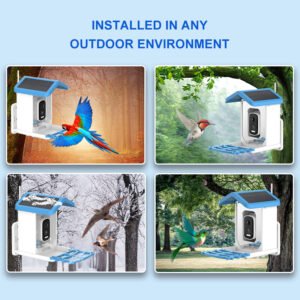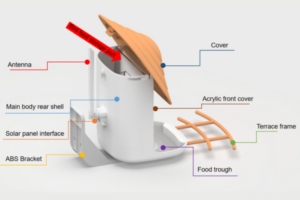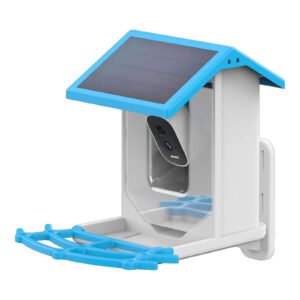Are you frustrated because birds aren’t coming to your new feeder? Without attracting them quickly, your bird-watching experience might be delayed. Fortunately, with the right steps, you can have them flocking to your feeder in no time.
Getting birds to find your new feeder may take some time, but with the right setup and patience, they will come. Factors like feeder type, location, and food choice can all play a role in attracting birds.
To ensure your feeder attracts birds efficiently, let’s dive deeper into the most common questions surrounding this issue.
What is the 5 7 9 Rule for Bird Feeders?
The “5 7 9 Rule” is a guideline for positioning bird feeders to maximize the likelihood of attracting birds. It refers to placing your feeder at least 5 feet off the ground, 7 feet from nearby shrubs or trees, and 9 feet from windows to minimize the risk of birds hitting the glass. Following these measurements helps create a safe, comfortable environment where birds can easily approach and enjoy your feeder. By adhering to these standards, you not only make the feeder more accessible to birds but also help reduce dangers such as predation and window collisions.
How Do I Attract Birds to My New Feeder?
To attract birds to a new feeder, ensure you choose the right type of food and feeder for the bird species in your area. Some birds prefer seeds like sunflower or safflower, while others are more inclined toward suet or nectar. Position your feeder near trees or shrubs to provide natural cover, making birds feel safe. Keep it clean to avoid mold or spoiled seeds. Additionally, be patient. Birds are creatures of habit, and it may take a few days or even weeks before they discover your new feeder. Using bird calls or even a bird bath nearby can further enhance attraction.
Why Aren’t Birds Coming to My New Feeder?
If birds aren’t coming to your new feeder, several factors could be at play. It might be the location—birds typically prefer quiet, secluded spots. If the feeder is in a high-traffic area, it could discourage birds from approaching. Another reason could be the food choice; different bird species prefer specific types of seeds or suet. Furthermore, you may not be providing enough shelter. Birds feel vulnerable in open spaces, so adding nearby trees or shrubs can make your feeder more inviting. Finally, seasonal changes also affect bird habits—during winter, birds may be harder to attract as they seek out food sources with higher fat content.
Do Birds Tell Each Other Where Feeders Are?
Yes, birds can communicate with each other about food sources, including bird feeders. They use a variety of methods to alert other birds, such as vocalizations and physical cues. When one bird discovers a reliable food source, it often signals others by chirping or flying in a pattern that attracts attention. This behavior helps other birds in the area find new food sources more quickly. If your new feeder is situated in a high-traffic area or is easily visible, you may see more birds visiting once the word spreads.
How Long Before Birds Find a New Feeder?
The time it takes for birds to discover a new feeder can vary depending on multiple factors. On average, it may take anywhere from a few days to a couple of weeks for birds to find your new feeder. This timeframe can be influenced by the type of food offered, the feeder’s visibility, and the presence of other food sources nearby. If birds haven’t discovered your feeder within a week, consider tweaking its location or food choice to better attract them. Patience is key, but with the right adjustments, the birds will come.
Do Birds Recognize Humans That Feed Them?
Yes, birds are capable of recognizing humans who regularly provide food. Over time, they become familiar with the sounds, smells, and even the appearance of people who feed them. This recognition allows birds to feel more comfortable approaching feeders. If you’ve been feeding birds in your yard for a while, you might even notice some becoming bolder, approaching you closer or singing nearby. However, not all birds will form this bond, as some remain more cautious, especially if they are newer to your area.
Why Do Birds Throw Seed Out of Feeders?
Birds often throw seed out of feeders for a variety of reasons. Sometimes, they may be selecting seeds based on their preferences, discarding those they don’t want. This is especially common with mixed seed blends where not all seeds appeal to every bird species. Another reason could be that the feeder type isn’t ideal—if it’s too crowded or difficult for the birds to perch comfortably, they may toss seeds out of frustration. Additionally, birds might throw seeds out to store them elsewhere, which is a natural behavior for certain species, such as chickadees and woodpeckers.
Summary
Attracting birds to a new feeder requires patience, the right setup, and a little know-how to ensure success.






